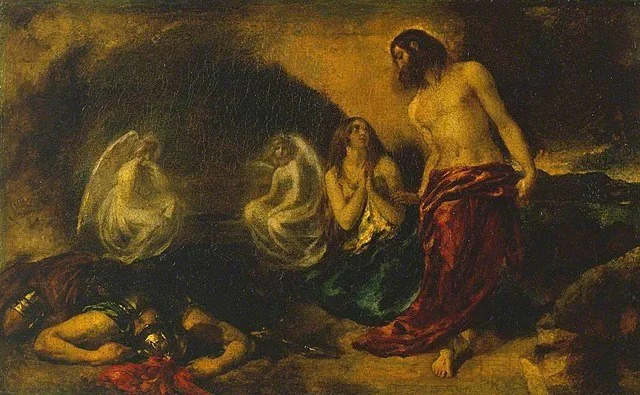Witnesses to the Empty Tomb – 17 April 2022 – Day of Resurrection
John 20:1–18
Mary Magdalene alone discovers that the tomb is empty and reports this to the disciples. Then Peter and “the other disciple” go to the tomb to confirm her report. We are not told what Peter concluded from observing the empty tomb with the burial cloths. We are told that the other disciple “saw and believed.” Today scholars sense that this “other disciple” that Jesus loved was actually the founder of a community and source of the unique traditions in the Fourth Gospel. The reading concludes with the statement that the disciples did not yet understand from the scriptures that Jesus would rise from the dead. Later it reports that Mary was deeply concerned that someone had stolen Jesus’ body (20:13); this detail is not included in the reading.
There are significant points to note from this story. First, Jews did not consider women acceptable witnesses. Since Mary Magdalene is identified by name in all four accounts of the discovery of the empty tomb we must conclude that historically she truly was connected with this experience.
Second, the report that Peter and “the other disciple” race one another to the tomb is amusing and it concludes that the other disciple gave way to allow Peter to enter the tomb first. This may be a projection of the acquiescence of the community founded by the other disciple to the leadership of the apostolic churches. At the same time the report that the other disciple “believed,” while Peter remains mystified, affirms the community’s understanding of their own greater spiritual depth, as well as that of their founder.
Third, while it was common for the early Christians to sense that the events in the life of Jesus fulfilled the scriptures, many of these claims seem to exceed the evidence. –– Regina A. Boisclair
Acts 10:34–43
Peter’s speech in the house of Cornelius summarizes Jesus’ ministry from his baptism to his death. Peter claims to be a witness that God raised Jesus after three days when he and other followers ate and drank with him. Stressing Jesus’ eating was a way to speak of the corporeal reality of the experience of the risen Christ.
Peter also states that Jesus commissioned followers to preach and bear witness that God has appointed Jesus to be judge of the living and dead. . . Peter moves beyond witness into theological interpretations that emerged in the early church. –– Regina A. Boisclair
1 Corinthians 15:19–26
[This text] draws from Paul’s most sustained discussion of resurrection. It appears that some in Corinth believed they had already entered resurrected life. They likely believed in the immortality of the soul and considered their physical bodies irrelevant. To address this Paul recalls that tradition that he received and proclaimed: Christ died, was buried (i.e., was really dead), and was raised (vv 15:3–4). He then lists those men to whom the risen Lord appeared (vv 15:5–9). Since women were not considered reliable witnesses in Jewish circles, Paul likely eliminated their stories to offer a stronger account.
For Paul this resurrection is an essential feature of Christian hope. . . (vv 15:16–17). What God did to vindicate Christ will be done for others. Just as death is humanity’s legacy from Adam, Christ’s legacy to his followers is that they will also be raised. –– Regina A. Boisclair
Regina Boisclair, a Roman Catholic biblical scholar, is Emerita Professor at Alaska Pacific University, Anchorage, Alaska.
Homily Service 43, no. 2 (2009): 79–93.
